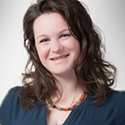Exploring the potential of private funding for NGOs: Follow-up questions
On 27 January 2016, PHAP and ICVA held the fifth session of the learning stream on humanitarian financing, which focused on the growing potential of private funding sources for NGOs in the humanitarian sector.
The event featured presentations from three experts – Charlotte Lattimer from Development Initiatives, Annemieke Tsike-Sossah from IKEA Foundation, and Rebecca Davies from Save the Children – providing an overview of the topic from three different angles: research on the overall global trends, the changing role of corporate actors, and fundraising strategies for NGOs.
Apart from answering during the event as many questions from participants as possible (you can listen to their answers in the event recording), the guest experts have also responded follow-up questions from the event participants, which you can now read on this page.
"As mentioned during the event, you have observed that private funding tends to prioritize response to natural disasters, and mainly targets NGOs rather than governmental institutions. Have you compared the differences in terms of figures and trends between private funding to humanitarian response and to development programs?"
- DRR Project Manager, INGO, Tajikistan
 Charlotte Lattimer
Charlotte LattimerThere are many differences between private funding in humanitarian contexts compared with development settings. Even in different ‘types’ of environment, the mix of resources and actors varies considerably. It’s important to also remember the diversity of funding covered by the term ‘private funding’, making it difficult to generalize. In terms of commercial flows, foreign direct investment – where a return on investment is expected – is generally much higher in non-crisis affected countries. Remittances, however, are an extremely important source of financing in crisis contexts. Our analysis shows that in 2014, remittances represented an aggregate 25% of total international inflows for the 20 recipients of the most humanitarian assistance that year, compared with 20% in all other developing countries. In somewhere like Yemen, a country in the midst of violent conflict, remittances represented nearly 70% of total international inflows.
 Annemieke Tsike-Sossah
Annemieke Tsike-SossahWe've seen an increase in private funding to non-natural disasters, with ourselves having increased our commitment as well over the years. There are private foundations and groups who traditionally supported development activities and now looking to get engaged in humanitarian challenges too. This is due perhaps more to the fact that human suffering at times seems to have no end, and that there's opportunity as well to get engaged.
For instance, the Syria crisis in particular has brought about the heightened urgency to look for solutions for children who are hard to reach or out of school for a too long period of time, even though we have large amounts of children elsewhere who've never been to school and are located in also unstable environments since birth. Yet solutions at scale have been rolled out much slower for those groups of children.
It's necessity, interconnectedness, and opportunity that brings more private sector actors into the fold, and hopefully can add value to responses and programs for people, wherever they are.
"Do we know why the Syria crisis attracted so much private funding compared to other crises in armed conflict contexts?"
- Consultant, Academia, UK
 Charlotte Lattimer
Charlotte LattimerWe can only speculate about the reasons behind the high levels of private funding for the Syria crisis compared with other conflict-driven emergencies. Most likely, high media attention to the Syria crisis has contributed as well as more active and successful fundraising campaigns by UN agencies and NGOs, directly targeting private donors for support. A whole set of factors has most likely contributed.
"How do you think private sector donors see their role evolving in the current humanitarian climate, in which available funds are not enough and States are considering withdrawing from their traditional funding commitments (e.g. UK and US)? Are they seeing their emerging role as a business opportunity or as a true corporate social responsibility?"
- Director, Think Tank, Switzerland
 Charlotte Lattimer
Charlotte LattimerAgain, given the diversity of funding flows and stakeholders covered by the term ‘private sector donors’, it’s difficult to generalize. Different actors will respond differently to the evolving humanitarian landscape. ‘Traditional’ humanitarian actors – including government donors, UN agencies and NGOs – should continue to demonstrate the need for principled humanitarian action and the need for investments that are in the interests of crisis-affected populations.
 Annemieke Tsike-Sossah
Annemieke Tsike-SossahThere are different reasons for private sector to get involved in addressing social and humanitarian challenges, and is partly dependent on the structure they use. IKEA Foundation, by the way it's set up, is already beyond corporate social responsibility, and is driven by its own mission - that of supporting children and their families with opportunities to create a future for themselves. We're not connected to the business other than sharing the same values and belief that children should be in a safe home. We consider ourselves complimentary to the business in this. IKEA business can still engage with their local communities, which you could classify as CSR, such as in-kind donations of IKEA furniture and toys to a children's hospital. Furthermore, they have a much larger Sustainability Group that safeguards human rights through supply chain, retail and trading activities they do, not even seeing it as CSR, but common business sense.
What we see is that more private sector actors are looking to go beyond CSR and even remove business objectives as such from reasoning to engage. Of course, when affiliated with a business, you want to leverage what's made that business great, such as creating a home, or connecting people. With the realization we're all connected and issues such as large-displacement of people likely to continue, we recognize we all need to contribute to improve how such social and humanitarian challenges are addressed. Hopefully we're able to influence through the larger IKEA family's engagement in social and humanitarian challenges that there can be multiple ways through which private sector can engage in a true sense, and that private sector should not always be seen as having a capitalist mission pur sang. Applying business principles and for-profit structures in addressing social and humanitarian challenges can sometimes prove a way for people to no longer depend on external aid and start building their own lives - and homes - again.
"How do you take into account the expectations of private donors and engage them in your work when those donors are individuals? How is this reflected in your fundraising strategies?"
- Security Director, INGO, Jordan

Rebecca Davies
Research shows that donors expect three things: 1) prompt recognition of their gift; 2) reassurance that their gifts would be used for a specific purpose; and, sometime between gift acknowledgement and the next ask, 3) measurable results of their gifts at work. On top of that, the fundraising strategy should include mapping a donor journey over the year so the experience of their giving is ongoing and not just transactional.
"Any suggestions on how can we improve and ensure accountability of funding from the private sector?"
- Founder, INGO, Switzerland
 Charlotte Lattimer
Charlotte LattimerThere has been increased attention recently on the role of the private sectors and its support for humanitarian action. Private sector contributions take many forms – from mobile communications to logistics providers, as well as investments in new forms of technology that support humanitarian action. It is not always possible to measure these contributions financially, but we do need to find a way of encouraging and supporting private sector actors to make their support visible. They should be held to the same accountability criteria as government donors. That should begin with publishing information on the support that they provide in a standardized format, such as the International Aid Transparency Initiative (IATI) Standard; and reporting to common systems such as UN OCHA’s Financial Tracking Service (FTS). Their contributions will then be counted alongside those of government donors.
"Do you know any existing or emerging examples of private donors engaging in multi-year funding?"
- Intern, United Nations, United States
 Charlotte Lattimer
Charlotte LattimerI cannot give specific examples of multi-year funding from foundations, trusts or companies. However, funding from individuals is usually flexible enough to be programmed with a multi-year approach.
 Annemieke Tsike-Sossah
Annemieke Tsike-SossahThe IKEA Foundation works only with multi-year funding, except for emergency funding that's dedicated to the first 3 months after an emergency. And we believe more funders should do so, and hope to leverage by our work of working that others will work similarly too.
"How important is it for a corporate philanthropic institution like IKEA Foundation to reduce bureaucracy with NGO partners in terms of funding procedures and reporting? Currently, there are many discussions on the need to harmonize and simplify reporting requirements by governmental institutions - in your opinion, is the private sector providing an alternative, more flexible way of working in the humanitarian sector?"
- Program Officer, Governmental agency, El Salvador
 Annemieke Tsike-Sossah
Annemieke Tsike-SossahIKEA Foundation is applying simplicity in procedures and reporting requirements, and are constantly learning and evaluating whether these formats still provide us with the needed information. We've started using a grants management system with the ability to track impact much better, so we do need organizations to apply and report on progress through that system, and by doing so, respond to questions that are pre-positioned. We've already learned these formats are more difficult to use by research groups for instance, and we know our concept note format is perhaps on the lengthy side. So we're getting our teams together and tweak what needs tweaking.
We also believe we offer a more flexible and easy way of reporting, and are more interested in the impact, and what obstacles the organizations face. We're therefore not using log frames as they can become very static and no longer as relevant as the project gets on.
The questions we have for organizations want to understand a few basic things: what is the problem you're trying to address, what's different to how you're trying to address it, and what will be your impact. Also, we're applying a relatively low-entry organizational assessment, that does not require certain number of audited years in cases of start-ups for instance, or for smaller, local organizations.
We believe in leadership and having the right people on the team, and we can help an organization grow to be able to fulfill heavier requirements as time goes on. By moving away from heavy log frames and financial procedures as such, and ensuring we have a trust relationship with that organization that grows over time, we can hopefully show that not all good efforts and impactful activities come in via heavy reporting requirements. We also have a relatively small team, which gives a small decision-making matrix for approval, so there's almost no bureaucracy. Even in that, we have to ensure everyone uses their time as best as possible, and we place autonomy and trust with those eventually responsible for running the project management and its results at our end. Hopefully we can influence this way how organizations can apply for funding and report on their progress.
"Does the IKEA Foundation work with all types of NGOs?"
- Project Assistant, local NGO, Cameroon
 Annemieke Tsike-Sossah
Annemieke Tsike-SossahOur policies don't necessarily prevent us from engaging with any type of NGO. That doesn't mean we already do collaborate with all kinds of organizations. However, we are increasingly looking at the best placed organizations or entities to each respond. And these come in all shapes and sizes. We do care about scale, but scale can also come through a small organization if they provide that gap, or link all other elements, thereby supporting social change at local, regional or national scale.
"It would be great if IKEA Foundation could fund more local and national actors instead of big organizations who are already able to raise funds by other means. Local organizations do not have the same possibilities. How can IKEA Foundation help local and national organizations strengthen their capacities?"
- Founder, INGO, Switzerland
 Annemieke Tsike-Sossah
Annemieke Tsike-SossahAbsolutely, we're learning about NGOs in countries of focus. We'll also continue to work with larger partners if we believe there is an added-value, as they are important for global learning and funding streams. It's important to realize that we currently learn about local or national organizations through our contacts with larger organizations, so smaller NGOs need to be prepared for being more visible through bigger NGOs as well.
When we've established a conversation with a local or national NGO, part of that discussion is around their organizational strengths. And this could take different shapes. If the social issue they're trying to resolve can be done only via subsidies or grants only, we have a conversation around donor diversification, in which the Foundation also plays a part and needs to talk to other donors as a reference as to why we would consider funding them. If the social issue can be (partially) addressed through a social business modality, we'll have the conversation around what's necessary to get to that sustainability point. Of course, all this also relates to the legal set-up of the organization and whether they can take loans for instance. But then it's also about our ability to provide funding for the organization, to attract people that can help contributing to that funding stream.
"What changes have you seen in the tone and design of fundraising messages? Some organizations argue that the "Case Example Syndrome" should be avoided, for instance, using message such as "This Is Mary. Mary..." in order to reduce stereotypes of the Global South."
- Volunteer, INGO, UK

Rebecca Davies
There's not been much change at all. Donors respond to individual stories of need, not statistics. Informed consent by the subject in the pictures (or his or her parent/ guardian) is essential before publishing any images. Further, new research in beneficiary perception shows that beneficiaries by and large want the world to know and see their story, if it can help alleviate their and their community's adverse circumstances.
"Has IKEA Foundation conducted an evaluation of the effectiveness of multi-year funding?"
- Intern, United Nations, United States
 Annemieke Tsike-Sossah
Annemieke Tsike-SossahWe haven't done such research yet. We are strengthening our own capacity for monitoring & evaluation. It is something to be continued, but I guess we can already extract some learning from our partners' experiences. They're able to retain staff and apply long-term strategies because of that, having more and a better impact to the people involved.
You can access the rest of the Q&A as well as further resources on the event page.